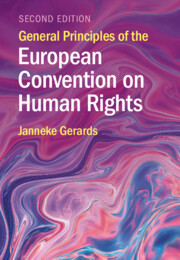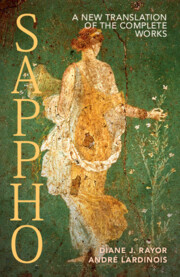Refine search
Actions for selected content:
36809 results in Cambridge Textbooks
Part III - Merits Review
-
- Book:
- Government Accountability Sources and Materials
- Published online:
- 05 May 2023
- Print publication:
- 08 June 2023, pp 175-226
-
- Chapter
- Export citation
Index
-
- Book:
- From Spinors to Supersymmetry
- Published online:
- 06 July 2023
- Print publication:
- 08 June 2023, pp 999-1010
-
- Chapter
- Export citation
About the authors
-
- Book:
- Government Accountability
- Published online:
- 05 May 2023
- Print publication:
- 08 June 2023, pp xvi-xvi
-
- Chapter
- Export citation
List of Selected Acronyms and Abbreviations
-
- Book:
- Modern Economic Regulation
- Published online:
- 25 May 2023
- Print publication:
- 08 June 2023, pp xix-xxvi
-
- Chapter
- Export citation
1 - Two-Component Formalism for Spin-1/2 Fermions
- from Part I - Spin-1/2 Fermions in Quantum Field Theory, the Standard Model, and Beyond
-
- Book:
- From Spinors to Supersymmetry
- Published online:
- 06 July 2023
- Print publication:
- 08 June 2023, pp 3-51
-
- Chapter
- Export citation
I - Appendix I Interaction Vertices of the SM and Its Seesaw Extension
- from Part V - The Appendices
-
- Book:
- From Spinors to Supersymmetry
- Published online:
- 06 July 2023
- Print publication:
- 08 June 2023, pp 947-951
-
- Chapter
- Export citation
Part IV - Sample Calculations in the Standard Model and Its Supersymmetric Extension
-
- Book:
- From Spinors to Supersymmetry
- Published online:
- 06 July 2023
- Print publication:
- 08 June 2023, pp 665-788
-
- Chapter
- Export citation
Copyright page
-
- Book:
- Modern Economic Regulation
- Published online:
- 25 May 2023
- Print publication:
- 08 June 2023, pp iv-iv
-
- Chapter
- Export citation
Part III - Part
-
- Book:
- Modern Economic Regulation
- Published online:
- 25 May 2023
- Print publication:
- 08 June 2023, pp 231-638
-
- Chapter
- Export citation
Part I - Spin-1/2 Fermions in Quantum Field Theory, the Standard Model, and Beyond
-
- Book:
- From Spinors to Supersymmetry
- Published online:
- 06 July 2023
- Print publication:
- 08 June 2023, pp 1-328
-
- Chapter
- Export citation
Chapter 15 - Consequences of unlawful action
- from Part IV - Judicial review
-
- Book:
- Government Accountability
- Published online:
- 05 May 2023
- Print publication:
- 08 June 2023, pp 525-548
-
- Chapter
- Export citation
Chapter 6 - Information disclosure
- from Part II - Public Accountability Mechanisms
-
- Book:
- Government Accountability Sources and Materials
- Published online:
- 05 May 2023
- Print publication:
- 08 June 2023, pp 126-174
-
- Chapter
- Export citation
Chapter 4 - Delegated legislation
- from Part I - Administrative decision-making
-
- Book:
- Government Accountability
- Published online:
- 05 May 2023
- Print publication:
- 08 June 2023, pp 89-128
-
- Chapter
- Export citation
Chapter 11 - Introduction to the grounds of review
- from Part IV - Judicial Review
-
- Book:
- Government Accountability Sources and Materials
- Published online:
- 05 May 2023
- Print publication:
- 08 June 2023, pp 316-322
-
- Chapter
- Export citation
14 - Rail Regulation
- from Part III
-
- Book:
- Modern Economic Regulation
- Published online:
- 25 May 2023
- Print publication:
- 08 June 2023, pp 503-546
-
- Chapter
- Export citation
Part I - Administrative decision-making
-
- Book:
- Government Accountability
- Published online:
- 05 May 2023
- Print publication:
- 08 June 2023, pp 23-128
-
- Chapter
- Export citation
Chapter 13 - Grounds arising from the statute conferring a power
- from Part IV - Judicial review
-
- Book:
- Government Accountability
- Published online:
- 05 May 2023
- Print publication:
- 08 June 2023, pp 448-486
-
- Chapter
- Export citation

Quantum Mechanics for Tomorrow's Engineers
-
- Published online:
- 06 June 2023
- Print publication:
- 29 September 2022
-
- Textbook
- Export citation

General Principles of the European Convention on Human Rights
-
- Published online:
- 03 June 2023
- Print publication:
- 13 July 2023
-
- Textbook
- Export citation

Sappho
- A New Translation of the Complete Works
-
- Published online:
- 02 June 2023
- Print publication:
- 02 February 2023
-
- Textbook
- Export citation
